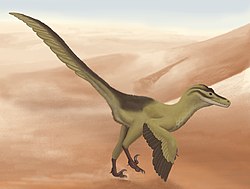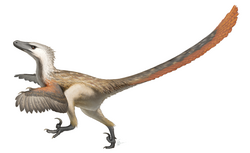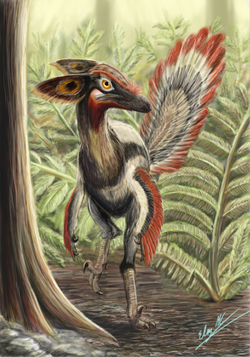| Bayan Mandahu Formation | |
|---|---|
| Stratigraphic range: Campanian, | |
 | |
| Type | Geological formation |
| Unit of | Gobi Desert |
| Lithology | |
| Primary | Sandstone |
| Location | |
| Coordinates | 41°45′N106°45′E / 41.75°N 106.75°E |
| Region | Inner Mongolia |
| Country | China |
| Type section | |
| Named for | Bayan Mandahu, Urad Rear Banner, Inner Mongolia |
The Bayan Mandahu Formation (also known as Wulansuhai Formation or Wuliangsuhai Formation) is a geological unit of "redbeds" located near the village of Bayan Mandahu in Inner Mongolia, China, in the Gobi Desert. It dates from the late Cretaceous Period. Laid down in the Campanian, it is dated somewhat uncertainly to between 75 and 71 mya (million years ago). [1]














